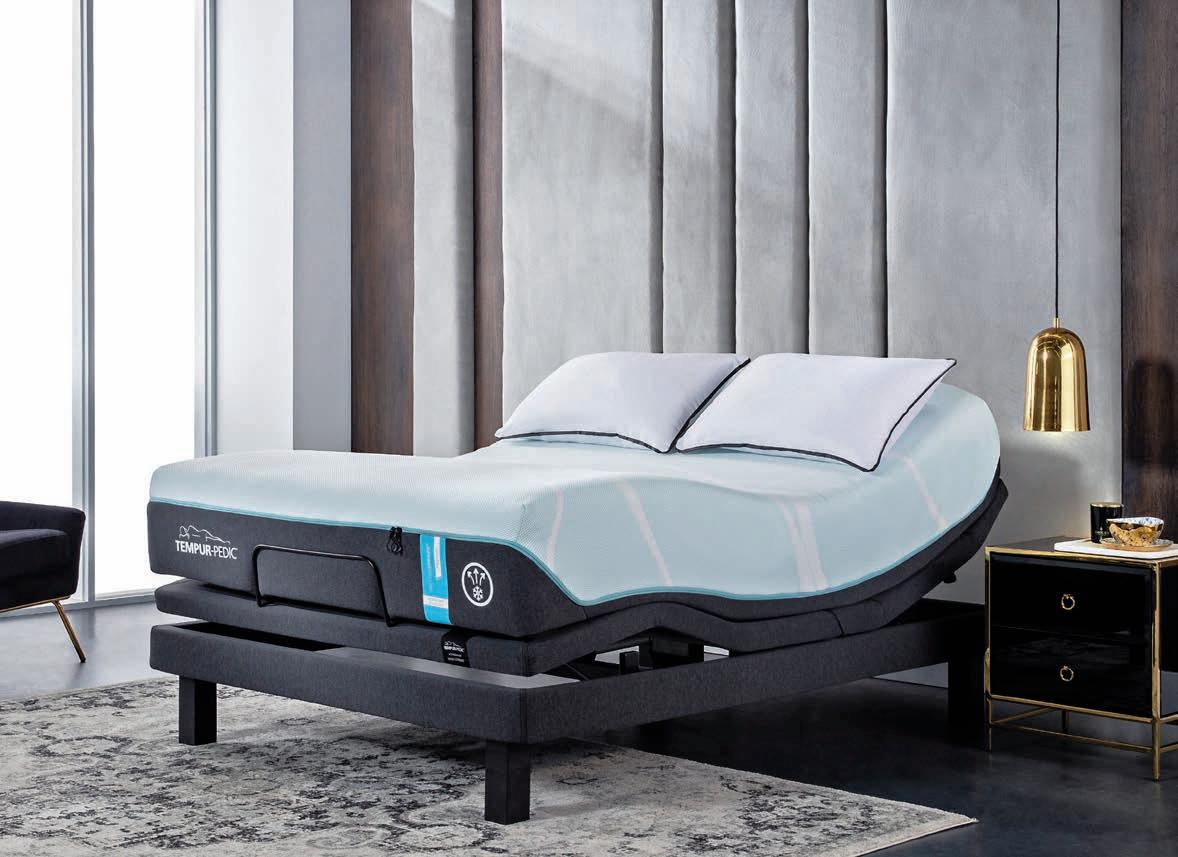














Have you ever noticed how instinctive kids are? If you actually watch a baby, they show signs when they are tired and they only drink their bottle until they are full. Even older kids, if given the freedom, they will tell you when they are hungry and only eat until they are satisfied plus tell you when they are tired and want to go to bed.
It’s not until we get a little older after we’ve been ‘conditioned’ to the routine of life that we adhere to schedules and ‘must–do’s.
Could you imagine if we all lived that instinctively? If we listened to our bodies and gave it what it needed, when it needed it. If we listened to the little voice inside our head and acted on the thoughts we have rather than keep ourselves so busy on autopilot.
I must admit that as I’m getting older, and life has become busier with a business and with three kids 8, 6 and 10 weeks, I am still noticing that little voice and the subtle cues my body is giving me. And though I don’t always honour them, I do my best to recognise their guidance.
It’s a fascinating concept, to quieten the noise, to be more in tune. I wonder how dramatically different life would be if we all lived this way. Would it eradicate toxic behaviours? Would it alleviate stress? Would it remove regret of inaction?
Just a thought to ponder Coasties...
Art Director/Editor
Tanzie Carpenter tanzie@onthecoastpublications.com.au
Production
Luke Carpenter luke@onthecoastpublications.com.au
Publisher
Tanzie Carpenter / 0414 611 851
Luke Carpenter / 0405 449 339 trading as On the Coast Publications ABN 52 212 212 482 PO Box 3251, Bateau Bay NSW 2261
For advertising enquiries advertising@onthecoastpublications.com.au
For article contribution enquiries tanzie@onthecoastpublications.com.au
Printing Spotpress Pty Ltd / 02 9549 1111
Cover image
The Natural Photography Co thenaturalphotographyco.com.au @thenatural_photographyco
Imagery ingimage.com and freepik.com
Contributors
Sam and Jordi Woods , Louise Hurley, Alita Blanchard, Carin Clegg, Dr Nicholas Altuneg, Dr John Irvine, Cathy Spooner, Savanna Bull, Sarah Tolmie and Sam Savva onthecoastpublications.com.au
4 Coffee with a Coastie –Tanya Green

WARRANTY & INDEMNITY
Advertisers and/or advertising agencies upon and by lodging material with the Publisher for publication or authorising or approving of the publication of any material INDEMNIFY the Publisher, its servants and agents against all liability claims or proceedings whatsoever arising from the publication and without limiting the generality of the fore–going to indemnify each of them in relation to defamation, slander of title, breach of copyright, infringement of trademarks or names of publication titles, unfair competition or trade practices, royalties or violation of rights or privacy AND WARRANT that the material compiles with all relevant laws and regulations and that its publication will not give rise to any rights against or liabilities in the Publisher, its servants or agents and in particular that nothing therein is capable of being misleading or deceptive or otherwise in breach of Part V of the Trade Practices Act 1974. The views expressed in On the Coast – Families are not necessarily those of the editor or publishing staff. While every effort has been made to insure accuracy of the information in this publication, no responsibility will be accepted by On the Coast – Families. No part of this publication may be reproduced without permission of the publisher.
8 Making the most out of your luxe pieces
10 Get outdoors Mumma!
14 Instead of “fixing” your child’s behaviour focus on learning your emotional regulation skills
16 Tackling tinsel time temptations
18 The Myopia Generation: Navigating the challenges of childhood near–sightedness
21 80 Stories High
22 Why I tell my kids about my failures and mistakes
24 “ What’s yours is mine, right?” Your guide to property division in a family law separation 26
Welcome to Coffee with a Coastie. I was grateful to sit down and chat with Central Coast local Tanya Green. Tanya is on a mission to help women and couples going through fertility treatments, though has had quite the journey to get there. From being told by medical professionals at the age of 16 that she’ll likely never have children, to having children in her 20s, only then to find herself undergoing fertility treatments later in life. This journey has fuelled her purpose to create the fertility wellness brand Ivy Dayz, to help others undergoing fertility treatments.
A big part of why I do these podcasts is in the hope that a message gets shared that helps someone. So, if you don’t mind, would you share how you dealt with being told at 16 that you would likely never be able to have children and what you learned from that experience that could help someone else going through a similar experience at such a young age?

I had gone a couple of years of having my period before saying things weren’t quite right to my mum. I was in a lot of pain and heavy cycles. I’m very thankful she took the information I gave her at such a young age and got me medical attention. I had an ultrasound, and they discovered that I had two uteruses. This was in 1996 or 97, I was about 16 years old. I then saw a gynaecologist, but he didn’t believe what the sonographer saw. So, we went and saw another one. I had my first surgery when I was around 17, and that’s when they confirmed that I had a double uterus.
I think I was too young to understand what was happening and the magnitude of it all. However, I was lucky that I had a mum that took action. So, I think what I would say to anyone who was reading
this at a young age is to listen to your body and to advocate for yourself. It can be hard as a young teenager, but that would be my main piece of advice.
You have shared that against the odds, you ended up having children in your 20s and that it wasn’t until later in life that you were faced with infertility. How has this dual experience shaped your perspective on children and infertility?
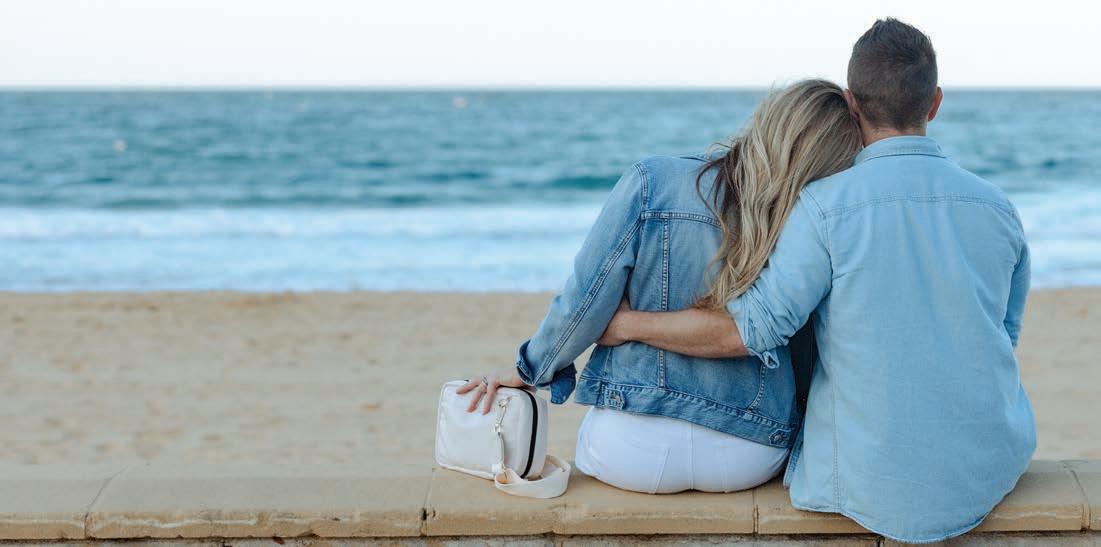
For me, my infertility was known in terms of the fact that I actively took part in becoming infertile. After my third baby was born, due to my complex gynaecological history and lots of surgeries, we assumed at the time that it wouldn’t be safe for me to get pregnant again. So, I decided to have my tubes tied at the age of 25.
Subsequently, getting remarried and wanting to have another baby with my husband, I still thought that my eggs would be okay and everything would still work despite coming into my mid–thirties and having my tubes tied. That wasn’t the case at all. Instead, what I’ve realised now is that I’m even more grateful for my children. I think if I waited and even had my
tubes, what I’ve identified, after going through six cycles of IVF, is that I likely would never have been able to have a baby anyway. So, it makes me more appreciative of what I do have.
I’m also realising going on this journey and being in the space a lot more that we need to protect our fertility. Our bodies are designed to have babies in our 20s or early 30s. Really in our 20s, in my opinion, and I think looking back now, having gone through this dual experience of being a young mum and then trying to get pregnant in my late 30s and early 40s, is just how important a woman’s fertility period is. But we often go off and live our lives waiting for everything to be lined up. Do we have the house? Have we had other experiences? Do we have a good job? We want things to be lined up so that, essentially, we can support a family better. But fertility doesn’t wait, especially for females. It’s not waiting for all of those things to happen. And being in this space now supporting women in their fertility wellness, it’s prevalent that we’re delaying having children for lots of reasons, which is quite okay, but you’re taking a risk. I see
now how special your fertility is. I think protecting your fertility is so important and that it’s an area that’s not often discussed.
What motivated you to openly share your personal infertility journey on your blog ‘The Naked Wife’?
Well, the blog has probably only been live for a year to 18 months. I created it but never published it. I would either journal in a book or I would type into the website. For me, it was really therapeutic to get my thoughts out and onto paper or the blog.
I had always thought I would share my journey in the hope that it would help people. I was hopeful when I started it that I would end up having my happy ending and I would be able to share all the tips and steps I took to get there, though that didn’t happen. But I’m proud of my words, I’m proud of my life, I’m proud of my story and my history, so I’ll just put it out there, and if anyone can pick something up from it, then that’s worth it to me.
As painful as your journey has been at times, I read the following line on our blog: ‘I could not be more thankful for the challenges thrown my way. Why? Because my mess is becoming my message’. Your message now is no doubt Ivy Dayz, and to help other women going through IVF. Can you recall the moment you knew you wanted to create something to help other women going through IVF?
My first thinking of Ivy Dayz came after my first IVF cycle, which we did here locally. I had also hidden away from the world and my husband, Jordan. He didn’t see me do any of my injections. I closed the door and didn’t let him in. It’s probably one of my biggest regrets. We thought we just had to get to day five embryo status, yet we only got a few eggs, and none of them fertilised.
So, the next cycle, I wanted to do something different, as I knew I didn’t care for myself the way I should have in our previous cycle. I had let my mental health slide, and I didn’t let Jordan get involved, which was hard for him. I googled my condition and found a doctor in Brisbane who specialised in my uterus type. We then travelled to Brisbane, and I had exploratory surgery.
My doctor then gave me the all–clear to pursue IVF. This is when Ivy Dayz was born because we were travelling and doing IVF, and I had to start searching for things that would allow me to take my medications with me. Nothing existed.
When we travelled, I put my medications in a 30 can cooler bag with ice packs. I realised there was nothing to support women who needed to take medications with them. I then parked the idea because I hadn’t fully gone through that IVF cycle. Whilst

luck. That day, the ‘On the Go Pouch’ came into my mind whilst injecting myself in the filthy female toilets. I thought there must be a better way for women to have a life during IVF. You should be able to go out and experience the joyful moments during fertility treatments because it’s in the joy that we potentially become less stressed, which can then have positive benefits on our body and our hormones.
As mentioned, the product that you created is the “On the Go Pouch”. Can you talk about the design process and what makes it unique?

in Brisbane, and because I had locked myself away for the first cycle and didn’t care for my mental health, we almost made a holiday out of it. We went out to dinners, did other activities, and watched the cricket. It was at that cricket game at the Gabba that Ivy Dayz came into clear focus. It was a really hot summer’s day, and I had to take an oversized bag with a huge sharp container and ice pack with all my medications through security. I thought, are they even going to let me in? Very quietly, I said to the male security that I’m going through IVF and need to inject some needles; here’s all my medication. He called over a female security guard and asked her to speak with me. She gave me a wink and said, go on through, and good
For me, the main thing was that it gave women something that was practical and supportive, with anonymity. Because if you want to go on date night, hang out with your girlfriends, or go to the movies and need to inject medication, you don’t want people necessarily seeing all of that. So, I knew that I wanted something that was convenient in a handbag–style design. Then, with all the internal elements, I had to look at what type of medication might need to go in it, along with the size of those medications. There were many prototypes around the internal structures. I already had all my medications here, so I knew certain sizes of things, but there was definitely a design process around what all that looked like and where the medications could be placed.
Essentially, I started off with pen and paper, but I also went into Smiggle to look at children’s pencil cases, as they have little places for pens and pencils along with zips and compartments. Then, as some medications need to be kept cool and others don’t, I knew it had to have an element of insulation. It has the option to use ice packs or
I just think protecting your fertility is so important and that it’s an area that’s not often discussed
“
not. Testing and getting the insulation correct was quite challenging. Because I wanted to ensure it didn’t get wet on the outside. A lot of the prototypes had condensation as the ice packs were melting, which was no good. I use a temperature logger that tests the temperature every three minutes, allowing me to capture really good data with the bag in different environments. One of the prototypes went to negative five degrees for two or three hours, which would freeze the medication. So, I knew the internal structures had to change.
It really was lots of prototyping. The manufacturer would make a bag with my information, send it to me, I would test it, then adapt from there. We finally got to the bag we have now, which has no condensation, stays cool, and includes a sharps container and injection preparation mat, which were really important features that I wanted to include. I’ve called it the ‘On the Go Pouch’ because I want women to be able to inject and carry their medicine safely on the go.
Lastly, what message or piece of advice would you like to share with women and couples currently beginning or already on their fertility journey?
I think there’s a combination of things. However, I really believe your wellness is so important during fertility treatments. It’s a challenging and difficult journey, and I think there are benefits in trying to find moments of joy amongst it all.
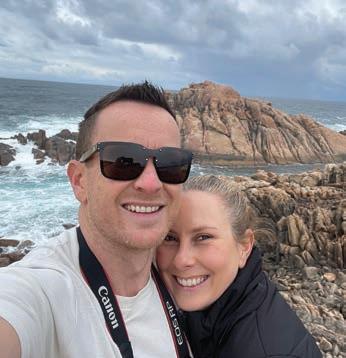
I think counselling is really helpful, together with your partner or on your own. Then, there is communication because I know that I closed my husband out for the first cycle. The whole experience has made us stronger as a couple, but it equally could have gone the other way, and I think that would have all come down to a lack of communication. Another piece of advice I would say is if you’re not feeling comfortable with your clinic, get a second opinion. Then, my last piece of advice is to tell people how they can help you. As you may not realise it at the time, but we often have expectations about how people might treat us or ask us about our journey. But people can get too scared to ask because they feel like it’s a hard conversation or that you might not want to speak
about it, and you might not want to speak about it, which is perfectly okay. But I do feel there’s a responsibility on us going through the treatments to let people know how they can best support us. I think most people, especially loved ones around you, want to support you, but they’re unsure. We expect sometimes that they will know how to support us, and then there becomes a disconnect and that can add to what’s already a challenging situation at times.
Luke with Tanya Green
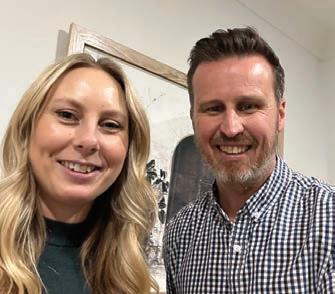
Then, for women, just really care for yourself, love yourself, and do the best with what you can at that moment. Know you can change your mind if you need to. The decisions you make today aren’t necessarily tomorrow’s decisions. So just be kind to yourself.
I can’t thank Tanya enough for sitting down and chatting with me and giving me permission to start a conversation with someone close to me on their fertility journey, I will be forever grateful. As no doubt, the women, and couples she is helping on their fertility journey are, too. If you would like to find out more about Tanya and Ivy Dayz, go to ivydayz.au, her blog thenakedwife.com.au or simply search Ivy Dayz online.
So please be sure to scan the QR code or go to coffeewithacoastie.com.au to hear the full conversation where I talk to Tanya about:
• Her insights into trauma and its long–lasting effects
• Choosing to stop IVF treatments and wrestling with the decision to this day
• Overcoming self–doubt to live with purpose and good intentions

• Journalling as a form of therapy
• Pushing through the fear of sharing her story, to help others
• The emotional journey of Ivy Dayz and connecting with women going through fertility treatment
• The importance of communication and much more…
I closed my husband out for the first cycle. The whole experience has made us stronger as a couple, but it equally could have gone the other way, and I think that would have all come down to a lack of communication
Over the last few years fashion trends have evolved and adapted to accommodate the ever changing economy and climate. This has included wearing linen year round, combining your ‘high end’ and ‘low end’ fashion together, wearing gold, sliver and rose gold accessories together and more recently wearing metallics and luxe pieces of a day!
For many, the mindset of ‘good’ pieces worn casually, or ‘metallics’ and ‘night time’ pieces worn during daylight can be a challenge. We are here to help guide you through these mind blocks and give you the confidence to make the most out of your entire wardrobe with confidence.
BELOW IS THE LOWDOWN FOR MAKING THE MOST OUT OF THE LUXE ITEMS IN YOUR WARDROBE!
Raid your ‘after 5’ accessories and team them back with a tee and maxi skirt or summer dress and denim jacket to give them a ‘luxe for less’ look when going out for coffee or running errands.
Don’t save your ‘expensive’ or ‘good’ pieces for a special occasion. Every day is a special occasion, so enjoy the beautiful pieces you worked hard for and make the most of them.
If investing in a ‘luxe’ item, consider cost per wear... if a $150 dress is worn twice in a season, it is an expensive piece to purchase. However, if said dress is worn 10 times, it becomes a $15 dress.
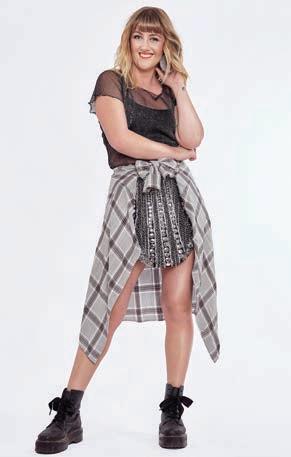
Just because something is shiny, blingy, has sequins, or ‘dressy’ doesn’t mean it is for night–time! Wear your luxe pieces of a day teamed back with denim for a casual look. i.e a

sequin tee, with a pair of linen pants and a metallic sandal is more than acceptable for a brunch date.
Remove the mind set that “it is a good piece, so can’t be worn to everyday outings”. Beautiful pieces of fashion are there to be enjoyed, so get them out as much as possible.
Don’t be afraid to team luxe pieces back with budget items! Style does not discriminate against budget. As stylists we are always mixing brands to create the desired outfit.
Play with metallic in your make up. A soft sweep of a metallic eye shadow is a fabulous way to bring a little ‘glamour’ to your day–to–day look. (Just don’t go too heavy handed and it will look appropriate)
Metallic sandals or a sneaker with a metallic finish is a wonderful way to add some luxe to your existing wardrobe, so if you don’t have any luxe items in your closet invest in some comfortable, metallic footwear.
TIP when it comes to metallics, ensure you pick a shade that is appropriate for your colour palette as it will ensure it will go with majority of your wardrobe and be flattering to your complexion.
We hope this inspires you to pull your luxe pieces out, style them up and let them see the daylight this spring and remember what Sam always says…“You can never be overdressed, only inappropriately dressed.”
Vibrantly yours, Sam & Jordi Woods xx
Understanding styling and fashion is one thing. Having a super natural flair for making everyday people look incredible is another. Once you’ve met Sam and Jordi Woods, it’s hard not to catch their infectious passion for dressing to match your own lifestyle, personality and charisma. Through their consultancy ‘Vibrant Concepts’, Sam and Jordi have transformed the lives of thousands. Let Sam and Jordi show you how to look and feel fabulous everyday at their Style Studio in Erina – learn the art of illusion dressing, colour matching, styling, translating fashion trends and savvy shopping with their unique VC Signature Styling Systems and services that are truly personal and really work!
To contact Vibrant Concepts phone 0425 221 676
Don’t save your ‘expensive’ or ‘good’ pieces for a special occasion. Everyday is a special occasion
Being a single, gay man Jason* knew his dream of becoming a dad wasn’t going to be easy. Then at age 34, he took a leap of faith and began the rigorous assessments process to become a foster carer. Once approved, he didn’t have long to wait.

But it didn’t happen all at once. Siblings Robert* and Mikaela* came to Jason for short periods in a respite care arrangement over eight months before entering full–time care. For Mikaela, who had experienced multiple placements and suffered from anxiety, it was critical to find a stable environment quickly.
‘The respite care proved to be an important transition time for everyone,” says Jason. “The children gradually began to develop trust in me, which really helped with the transition.”
Jason knew becoming a foster carer would involve challenges but found the online training he completed during the assessment process, along with a personal behaviour management plan for each child, very helpful.

The biggest challenges for Jason have been the kinds of things most working parents have to deal with, like arranging after school activities and keeping both children occupied at the same time when they wanted different things.
“I have close family who help out and my employer is also very supportive”, says Jason. “I admit that sometimes it felt as if I was getting nowhere. The Challenge Community Services Case Worker has been fantastic and always there when I needed her. Now the children are both more settled, I feel as though we have turned a major corner.”
For any single person or couple wanting to care for a child, Jason urges them to just do it. “Don’t let other people who don’t understand talk you out of it,” Jason confirms. “It can feel like an enormous step, but it’s an extraordinary feeling to give a child a loving, safe, and stable home. As a foster carer my life has so much more meaning and I love every minute of it. I wouldn’t change a thing.”
*names have been changed and stock image used

If you have ever thought about Foster Care, take the leap today. You could change a child’s life. We will be here to support you every step of the way.
As mums, our lives can often feel like a never–ending juggling act. Between the demands of parenting, household chores and work, taking time for ourselves can end up at the bottom of the priority list. However, finding moments for self–care is not only essential for our wellbeing but also sets a positive example for our children.

One powerful way to prioritise self–care is by getting our bodies moving outdoors. While the physical benefits of outdoor exercise are numerous, they extend far beyond just fitness. Here’s why I believe we all need to get outside to move our body on a regular basis:
Outdoor exercise is a natural mood enhancer. The fresh air, sunshine, and connection to nature can have a profound impact on our mental wellbeing. When you step outside for a workout or even a walk, you’re more likely to reduce our stress levels. Being in nature allows our mind to disconnect from the chaos of everyday mum–life, offering a sense of calm and mental clarity
Exposure to sunlight during outdoor exercise provides our bodies with a natural source of Vitamin D. This vitamin plays a vital role in maintaining strong bones and a healthy immune system. Remember to wear SPF when the UV index increases during spring and summer.
Us mums often struggle with physical and mental fatigue from day to day mum–life, but outdoor exercise can be a powerful energy booster. The combination of physical activity and fresh air increases oxygen to our muscles and brain, revitalises our body and can leave you feeling more energetic and ready to tackle whatever the kiddies have to throw at us that day!
Exercising outdoors sets an example for our children, encouraging them to adopt healthy habits from a young age. We can involve the kids in our outdoor workouts, whether it’s playing in the park (have you ever tried doing squats as you push your little one on the swings? It’s a great leg workout!), going for a walk, or cycling together. These shared experiences can create lasting memories and promote a healthy family lifestyle.
Quality sleep is essential! Most of the time when our children are little we often face disrupted sleep patterns, so
Exercising outdoors sets an example for our children, encouraging them to adopt healthy habits from a young age. We can involve the kids in our outdoor workouts, whether it’s playing in the park (have you ever tried doing squats as you push your little one on the swings?
the little sleep we do get needs to be good quality. Exercising outdoors can help regulate our circadian rhythm, making it easier to fall asleep and enjoy deeper, more restorative sleep. Adequate rest is crucial for maintaining our physical and mental wellbeing.
Regular outdoor exercise can boost our immune system, helping you stay
healthier and more resistant to common illnesses. This is especially beneficial for us mums when staying healthy is vital when taking care of a family.
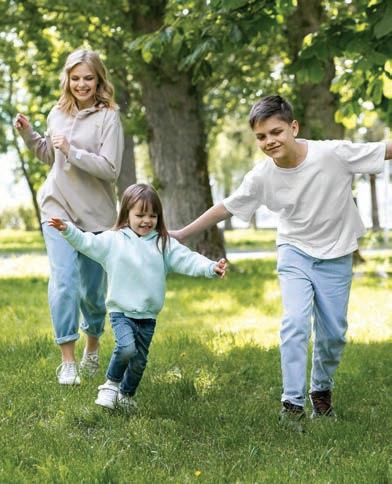
Exercising outdoors opens up a world of possibilities. From yoga in the park to bush walks or even a short jog through the neighbourhood (providing your pelvic floor and core is ready for running), the options are so diverse, which is great for preventing boredom and keeps our fitness routines fresh and exciting.

Finally, outdoor exercise can really boost our self–esteem. Achieving fitness goals outdoors, no matter how small, can instil a sense of accomplishment. Over time, this leads to improved self–confidence, which will shine through all aspects of life.
Exercising outdoors is not just about physical fitness; it’s a holistic approach to
These are some of my favourites:
Squats while pushing the swings
Over–unders (start by holding a plank on the ground, your little one climbs over the top of you then you lift your hips higher so that they can crawl under you. Repeat)
Monster chase (you are the monster and you chase after your little one. Mix up the way that you move– you could try jogging, walking lunges or jumps)
wellbeing for mums. It nurtures mental health, fosters family bonds, and enriches our lives in numerous ways. So, next time you find yourself overwhelmed by the demands of motherhood, consider stepping outside, even for ten minutes
and get some movement into your day. If you’d like to return to high impact exercise but not sure how, booking an appointment with a women’s health or pelvic health physio is a great place to start.
Louise Hurley As a MumSafe™ trainer and Pregnancy and Postnatal Corrective Exercise Specialist, Louise’s mission is to help mums at every stage of motherhood safely start or return to exercise. Louise is the owner of Strong Mums and runs small group training and 1:1 PT. Find out more at www.strongmums.com or on social media @strongmumsgosford
Central Coast Council is continuing to provide opportunities for local creatives to shine by showcasing their skills, art and talents in the next Creative Spaces program announced for 2023 and beyond.
The line up of creatives to host activities in the Gallery Container in the Toukley Village Green for the Creative Spaces 2023–24 program will positively contribute to the cultural life and increase visitation to Toukley for the benefit of local business.
Council Director of Community and Recreation Services, Melanie Smith said Council was proud to have curated an engaging program that fills the Gallery Container with creative workshops, exhibitions and demonstrations to ensure the greatest benefit to local makers and creators, and the wider community.
A free after–school program to help children be more active and eat healthier will return at three locations across the Central Coast next school term.
Go4Fun will run for 10 weeks at Gosford Olympic Swimming Pool every Wednesday evening from 11 October, while a land–based program will take place at Ocean Beach Surf Life Saving Club in Umina Beach every Thursday evening from 12 October.
A culturally adapted version of the program run by Bungree Aboriginal Association and available for all families will take place at Lake Haven Recreation Centre every Tuesday evening from 10 October.
Go4Fun is a free healthy wellbeing program for children aged 7 to 13 to enjoy together with their families. Run by trained health and community professionals, the program is a fun way for children to build self–esteem and learn about eating well, staying active and living a healthy life.
Kids take part in group activities and games, receive rewards and prizes, while parents benefit from professional tailored advice to help make positive health changes for the whole family.
Families unable to attend the face–to–face programs can register for Go4Fun Online to view weekly online sessions
and receive personalised phone support from a Go4Fun coach at times convenient for them.
Go4Fun is a NSW Health state–wide initiative offered on the Central Coast by the Local Health District’s Health Promotion Service. Health promotion officer Michele Munday said the program provides a positive environment for children and families.

“Go4Fun is a supportive and positive environment that improves children’s wellbeing,” Michele said.
“The activities and games help them be more active, reduce their screen time and learn to feel good with nutrition. It’s also a perfect opportunity for parents and carers to enjoy quality time with children.
“Over the course of the program we can really see children’s confidence grow as they get involved in the activities and make new friends.
“We’re delighted to be able to offer three programs across the Central Coast in term 4, including land and water–based programs, as well as our culturally adapted Aboriginal Go4Fun program.”
To register, or for more information, visit go4fun.com.au or free phone 1800 780 900.
“Council is funding three visual arts programs to occupy three–month blocks from 11 September 2023 to 28 June 2024,” Ms Smith said.
“The program is now live and is vibrant and dynamic, so we encourage all community members to explore the schedule and regularly visit Creative Spaces in Toukley’s Village Green. There will also be regular updates on Love Central Coast to support the talent and creative ability of those within the community.
Council Administrator Rik Hart said this opportunity is of great benefit to our creative enterprises by providing a platform to showcase their creative practice as well as a terrific way to achieve broad support from the Central Coast community.
“The program has always been supported by the Central Coast, home to some of the county’s top creatives, from sculptors to painters, ceramicists, and designers,” Mr Hart said.
“The program has proven to be important to developing and supporting people working in the creative industries on the Central Coast and the value they add to the economy.”
To learn more about each of the creatives set to be involved with Creative Spaces, and view the program for 2023–24 visit lovecentralcoast.com/creative-spaces

Many children often find themselves overwhelmed by big feelings, leading to challenging behaviours such as hitting, biting, sibling conflicts, hurtful words, running away, anxiety, and withdrawal.
When your child acts out, they are usually in an emotionally flooded state, possibly due to unmet needs, a build–up of painful emotions, or over–stimulation. Responses to these emotions can vary: some children withdraw, others become argumentative, some experience anxiety, and some resort to aggression.
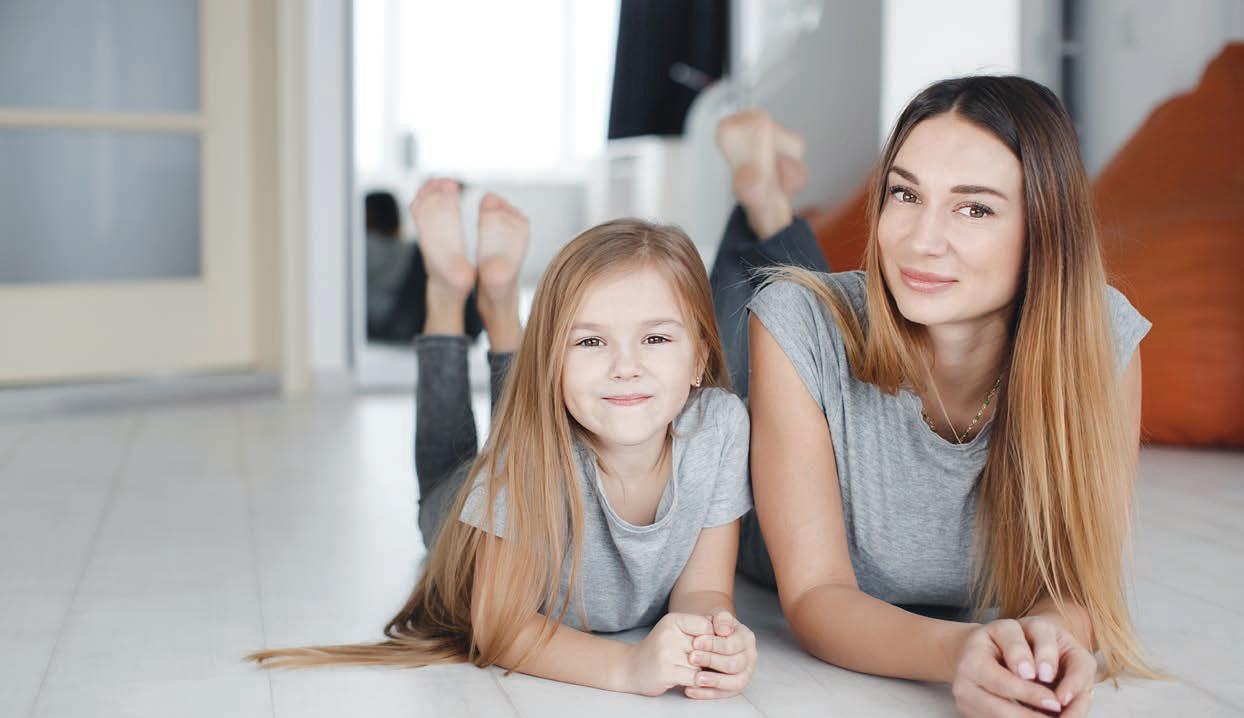
In moments when children enter the fight/flight/freeze stress response mode, their bodies take control, causing them to exhibit behaviours that often resemble the very ones we try to curb using fear and punishment.
Many of us grew up in environments where fear and punishment were common parenting techniques. However, attachment research has shown that this outdated approach can have adverse effects on a child’s emotional and physical wellbeing. It may lead to long–term issues in teen years and adulthood, including unhealthy
coping mechanisms, anxiety, depression, low self–esteem, relationship problems, and even physical illnesses.
EMOTIONAL REGULATION IS A SKILL THAT TAKES YEARS TO DEVELOP AND MUST BE DEMONSTRATED. Children learn true emotional self–regulation when they observe their caregivers model it and provide a soothing and regulated presence, a process known as co–regulation. Just as adults seek support from friends, partners, or therapists when upset, children require the same soothing and assistance from us.
Emotional regulation is not only crucial for effective parenting but also for our personal growth and wellbeing. Many of us were not exposed to healthy emotional regulation during our upbringing, making it vital to learn this skill as we navigate parenthood. Otherwise, we risk becoming more emotionally deregulated each time our child exhibits challenging behaviours.
Remember this key concept: “They are a good kid, having a hard time.”
It’s essential to understand that you cannot control or change another person, but you can change your own reactions, which, in turn, can influence your child’s behaviour.
TEACHING EMOTIONAL REGULATION BY EXAMPLE:
Children are keen observers who learn more from what they see than what they are told. They absorb everything in their surroundings. If parents consistently engage in destructive behaviours like throwing objects, slamming doors, or yelling, their children are likely to mimic these actions. Conversely, when parents can maintain composure and authentically communicate their feelings and needs, without “flipping their lid”, children learn that getting upset does not necessitate an extreme response and develop valuable self–regulation skills.
Emotional regulation is hard for many parents due to attachment wounds and trauma, so it’s important to
Children learn true emotional self–regulation when they observe their caregivers model it and provide a soothing and regulated presence, a process known as co–regulation
seek support if you are struggling with anger, anxiety, fear and rage.
The emotional atmosphere we cultivate at home significantly impacts our children’s healing, growth, and happiness. Like adults, children seek happiness and connection, but at times, fear or anger can overwhelm them. Our regulated presence provides them with a path back to a loving connection, helping them feel safe. From safety, challenging behaviours can soften.

When children feel safe within their home environment, they become more open to experiencing their emotions fully. This emotional awareness enables them to process their feelings and understand that emotions are a natural part of being human, without the need to act on them.


Children are more likely to follow our guidance when they feel respected and understood by us. They come to realise
Soften your voice
Get down to their level
Slow everything down – your movement, your breath, your voice
Catch their gaze / make eye contact (not for all kids)
Listen – stop talking and just listen
Notice your breath – try long exhale
Tell yourself “I am safe and I can help them to feel safe”
Speak to them as you wish you had been spoken to as a child www.theawaremama.com.au
that they may not always get what they want, but they gain something even more valuable: a parent who listens and empathises, even when saying no.
Children are remarkably attuned to their parents’ moods and tensions. Unresolved issues can trigger subconscious reactions in children. Therefore, working on our own emotional baggage often results in improvements in our child’s behaviour, even without direct intervention.
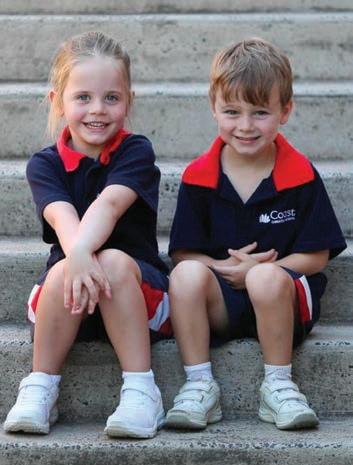
When a child feels emotionally safe and connected, and receives co–regulation from a regulated adult, they are more likely to do well and learn self regulation over time.
The good news is that it’s never too late for children to learn emotional self–regulation, even if they’ve developed counterproductive habits. The key lies
in our role modeling.
Learning to regulate emotions is a lifelong journey. Start by simply acknowledging your own feelings. When you become upset, resist the urge to react immediately. Instead, take a moment to pause, slow everything down, long slow exhales, notice physical sensations, label your feelings, and extend compassion to yourself. This practice may be challenging, but each time you engage in it, you’re rewiring your brain and strengthening your ability to stay regulated in the future.
As you learn emotional regulation, you will model this essential life skill for your child, setting a powerful example for their own growth and development.
Email alitablanchard@gmail.com Web www.theawaremama.com.au
At this time of year there are celebrations galore and the social norm is to indulge. But with most of us trying to keep the whole family healthy and stop the kids from going crazy on coloured, flavoured, and preserved foods, the only sensible solution is to start some new Christmas traditions.

If I had a dollar for how many patient’s, parent’s, teachers and healthcare workers told me they wish people would not give them or their kids ‘sometimes’ or ‘discretionary foods’ I would be rolling it just like the big multinational food companies!
Talking to family and friends about what gifts would be best is a top priority and lays the expectation of what you would and would not like to receive in future years too.
Active gifts keep everyone moving and the list is endless:
Bats, rackets, balls of all sorts, Frisbee, skipping rope, boogie boards, helmets, gloves, shoes, protection padding or even bike maintenance kits
Exercise and sports classes/ memberships including dance, skating, circus, reformer Pilates and cardio tennis
Adventure experiences can include sailing, kayaking or indoor or outdoor fun parks
In light of the edible food garden trend, a small packet of herb or
vegetable seeds can make a great easy, cheap and healthy gift
A dwarf fruit or nut tree can be well received and these used to be more traditional gifts back in the day
If you must give food, go for a thoughtful food basket
– Buy a basket from an op shop and fill it with some goodies: fresh fruit, uncracked nuts, fair trade tea or coffee, home or locally made chutneys, oils, dressings, and sauces
I b et most teachers would very much appreciate a basket of fruit from their class where each child takes gives 1 piece of fruit that they think their teacher will like.
Go to the extra effort to have a rainbow of nutritious colours with:
Veggie sticks
– C apsicum, cucumber, carrot, celery, beans, broccoli and cauliflower stalks or florets
Dips
– Hummus, tzatziki or veggie dips are a favourite
Buy a basket from an op shop and fill it with some goodies: fresh fruit, un–cracked nuts, fair trade tea or coffee, home or locally made chutneys, oils, dressings, and sauces
Salads
Jazz up a salad with some leftover roasted vegetables like pumpkin and beetroot, some herbs or edible flowers like violets or nasturtiums. Serve the dressing on the side so everyone, particularly the kids, can choose how much or how little they like
Fruit
Salads or platters
– Add apple or pear slices, grapes, or strawberries to the cheese platter
Frozen fruit such as orange
quarters, grapes, berries, and banana chunks are always a hit for all
Home–made yoghurt or fruit juice ice–blocks with added fruit slices.
Avoid over–filling plates. Encourage the kids to decide to try a little of a few options rather than a lot of everything.
Bring a container for leftovers so nothing goes to waste and you and the kids feel like they did not miss out if they did not try everything.
CHEERS BIG EARS!
Limit excess, easy to drink energy by:
Adding plenty of ice and soda water to juice, cordial, soft drinks, the punch and cocktails
Using small cups or glasses for high energy drinks and using large glasses for water
Remember to alternate sweet or alcoholic drinks with water
Offer water to everyone to look after them too.
EAT MINDFULLY
Plan ahead. Think about what foods

Complete Sense is an autism counselling and consulting service where I aim to provide your family with emotional and practical support. I believe you are the expert on your child and I work with families to provide counselling for the range of emotions involved in having an Autistic family member. I can collaborate with your family in your home to provide tailored support to help with counselling, stress management, parenting skills and autism specific support such as visual aids for communication.

Contact 0466 127 763
nat@completesense.com.au
www.completesense.com.au
14 Bellbird Avenue, Terrigal, NSW 2260
you will be eating over the festive season when out and when at home. Try to balance out the family’s food intake over the day or week
Think about hunger level – are you or the kids really hungry?
Think about why are you eating? Often, we eat more food in social groups and are not paying attention to our hunger. Removing the food to keep it safe in the fridge to avoid unnecessary nibbling can be a great strategy
Keep portions in check:
Avoid piling your plate sky high:
Stick to ½ plate salad or vegetables, ¼ starchy foods and ¼ protein foods or less if you have just eaten or plan to have dessert
Slow down and truly appreciate the eating experience
Savour the smell, textures and tastes. Notice how the sensations change as you chew and swallow
– Put your cutlery and drink down between each bite or sip
Be happy knowing when enough is enough.
Take control of the temptations with your family this year and have a tremendous festive season!
Carin Clegg is the Director of Bright Diets and is a Paediatric Dietitian and Fitness Professional with an interest in environmental sustainability. Carin wants everyone to be clever about their eating to feel happy, healthy and vibrant! Contact Carin on 0407 492 278 or via www.brightdiets.com.au
Services Offered
Counselling, Emotional regulation counselling, Autism consulting - including visual support, social stories, behavioural support, autism education, emotional support, and parenting skills, Professional development for preschools, schools or other organisations that may work with Autistic individuals, Autism specific school readiness sessions and Early Intervention groups.

As the saying goes - 'you can't pour from an empty cup'. I want to help you fill your cup.

In today’s digital age, where screens dominate both learning and leisure, a new concern is emerging among families and kids – the rise of Myopia, commonly known as near–sightedness. With screens becoming an integral part of daily life, parents must understand the potential impact of excessive screen time on their children’s eye health.
Myopia is a condition that causes distant objects to appear blurry while close objects remain clearer. The prevalence of myopia is on the rise, with children being particularly vulnerable. Often referred to as the “Myopia Generation,” these young individuals are growing up in an era where digital devices are commonly used.
Recent studies reveal alarming statistics – in some parts of the world, up to 90% of teenagers and young adults are affected by Myopia.
18% of Australians had Myopia in 1978, 32% of the Australian population in 2020 were myopic, and the prevalence of Myopia is forecast to rise to 55% by 2050. If the prevalence of Myopia increased to 50% worldwide by 2050, then 4.8 billion people on the planet would be myopic.
Every extra dioptre of myopia increases the risk of retinal detachment, myopic maculopathy, myopic glaucoma and myopic cataract by 20–30%. High myopia is a leading cause of irreversible vision loss long term.
Myopia is more likely to develop
quickly with younger onset of myopia, particularly in children aged between 5–12 years of age.
Race is also a factor, with Asian children having the highest risk of developing Myopia, followed by the Caucasian population and then Hispanic / African–American populations.
Family history is related to Myopia development. If one parent is myopic, then you have a 1/3 chance of becoming myopic, and if both parents are myopic, then there is a 2/3 chance of developing myopia. Interestingly there is a ¼ chance of developing Myopia if neither parent is myopic.
Increased near–focusing time, particularly on digital devices and reduced outdoor time also appear to increase the risk of myopic development.
Excessive screen time, both for educational and recreational purposes, has been linked to the onset and progression of Myopia in children. The increased time spent indoors and the reduced exposure to natural light could
be contributing factors. The strain on young eyes from prolonged screen use can cause discomfort, fatigue, binocular vision disorders and, in some cases, Myopia.
As parents, it’s essential to strike a balance between screen time and outdoor activities.
Outdoor activities, such as sports, combine the use of natural light with engagement in activities that require looking at distant objects and can reduce the risk of developing Myopia in the first instance.
Research indicates that at least 2 hours a day spent outdoors reduces the risk of developing Myopia when your vision is normal, but it doesn’t help once you become myopic.
If your child has been diagnosed with myopia, proactive measures can be taken to manage its progression. Specialised spectacle lenses, contact lenses, training lenses and vision therapy may slow down the

advancement of Myopia. Regular visits to a Behavioural Optometrist are vital to monitor your child’s eye health and ensure appropriate management strategies are in place.
Myopia management options aim to not only correct vision but also slow down the elongation of the eyeball, which contributes to the worsening of myopia. By starting Myopia management early, you can give your child a better chance at maintaining clearer vision throughout their lives.
As parents, we safeguard our children’s wellbeing in this digital age. By encouraging a healthy lifestyle that includes outdoor play, limiting screen time, and scheduling regular eye check–ups, we can collectively combat the Myopia epidemic and nurture a

generation with clearer vision and a brighter future.
Addressing myopia goes beyond individual efforts – it’s a community endeavour. Schools, parents, and healthcare providers can work together to promote awareness about the importance of eye health. By fostering healthy habits and encouraging open conversations about screen time and Myopia, we can ensure that the Myopia Generation grows up with the clarity they deserve.
The Myopia Generation faces unique challenges in the digital age. Still, with
knowledge and proactive steps, we can help our children see a future filled with clear vision, boundless possibilities, and a lifelong appreciation for the world around them. By prioritising outdoor activities, managing screen time, and seeking professional guidance, we can empower our children to embrace a world where clear vision paves the way for their success and wellbeing.
This article is intended to promote understanding of and knowledge about general eye health topics. It should not be used as a substitute for professional advice, diagnosis, or treatment. Always seek the advice of your health care professional prior to incorporating this as part of your health regimen.

Dr Nicholas Altuneg is a Behavioural Optometrist who has been working on the Central Coast for almost 30 years. He is the co–founder at Eyes by Design, which is in the Kincumber Centre. Appointments can be made by phone 4369 8169 or online at www.eyesbydesign.com.au
Leading Central Coast private practice, Cancer Rehabilitation & Lymphatic Solutions, developer of the unique OncoLaser system using MLS Laser, offer patients a premium and comprehensive allied health rehabilitation centre, providing high quality services to aid in quicker and more effective physical rehabilitation recovery from surgeries, cancer treatment, sports injuries and other conditions.

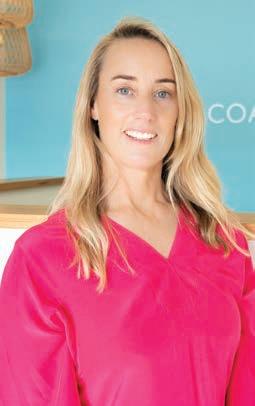

Outdoor activities, such as sports, combine the use of natural light with engagement in activities that require looking at distant objects and can reduce the risk of developing Myopia in the first instance

Phillip’s Christmas story – Phillip reverts to white lies to solve his Santa problems
Do you think it’s justified to tell a “white” lie? Phillip was guilty of that, but he was a master of quick thinking. I have many of his exploits in mind, but his handling of the Christmas ritual takes the cake.
Talking about rituals reminds me just how important they are to our emotional survival. Just for a moment, think about your habits over birthdays, Easter egg hunts, the Christmas symbols on the tree, the present opening format, your Sunday night dinners etc. Those rituals continue over the generations, and in recent times, scientists are discovering the strong stabilising role rituals play in our mental health.

One of those rituals in many homes is the Santa visit, where my friend Phillip was a master. His family’s ritual for Santa’s visit dated back at least three generations, but last year things went wrong. Phillip’s family were devout Catholics. Their custom was for the extended family, about 30 in total, to get together at Phillip and Jan’s place on Christmas Eve for a big BBQ. Then the group would split up, some off home to bed and some to prepare for Santa, and then some would go off to midnight mass. That meant each family would
wake up Christmas morning, perform their own routines, and celebrate the wonder of wonders in their traditional way.
In Phillip and Jan’s home and before the visitors arrived, the kids would help Dad get everything set, including the Christmas cake for Santa.
Every year, after the kids had gone to bed and before he went to Mass, it was Phillip’s job to eat half of Santa’s cake. Last year, things were rushed. The barbecue had been a bit of a culinary disaster. Dad was hassled and, in his haste, forgot to attend to the eating of the cake ritual.
Now keep in mind that their son, Barney, aged seven, thought the sun, moon and stars shone out of Dad. But on Christmas morning, the whole fabric of their faith came unstuck big time. The kids had gone out to check that Santa had been and left the presents and there was the cake, untouched!
Barney raced into his parents’ bedroom, tears streaming down his face and screaming at Dad, “You’re a liar. I don’t believe you anymore. There’s no Santa. We left out the cake for him, and it’s still there. I hate you”. Barney then ran back into his room, howling his eyes out.
Jan touched Phillip on the arm and whispered, “I think it’s about time for you and Barney to have a big talk. He’s ready to know the truth”. Phillip climbed slowly out of bed and trudged his way into his son’s room. He knew this wasn’t going to be easy. He entered and shut the door. Ten minutes later, a much happier Dad and a much brighter Barney emerged.
“Are you OK, son?” asked his
anxious mum.
“Yeah, I’m good, but I wish Dad had told me that Santa was on a diet and couldn’t eat fruit cake!”
Well done, Dad. Welcome to the Storytellers’ Club.
Sometimes white lies, half–truths, creative compositions are not only forgiveable but necessary to add spice to life, build imagination, and offer a distraction from the day–to–day grind of responsibility and chores. Long live laughter and the stress relief that lurks therein.
I’m not sure I agree with Dr John’s summary of this story. I’ve seen too many examples where telling a white lie to save the day has led to misery down the track.
“Lies are neither bad nor good. Like a fire, they can either keep you warm or burn you to death; depending on how they’re used.” Max Brooks
“80 Stories High” is an uplifting collection of short stories about ordinary people doing extraordinary things for those they love. They are from the memoirs of Dr John Irvine, one of Australia’s most heard, read and seen Paediatric Psychologists.
Join the Care2Prepare project today!


If you provide care for a family member or friend, live with disability, or are frail due to age this project is for you!
We are seeking participants in the Central Coast who would like personalised support to create a tailored disaster preparedness plan for your household and the people you care for.
I had a conversation with my son and told him I’d been suspended from high school. He was shocked…at first, even I was, I couldn’t believe the words came out.
As parents we often think we need to be the perfect image in front of our children. We don’t want them to see mistakes and errors in judgement in the hope they won’t make the same mistakes we did.
But they will. In fact, they will make many mistakes. Some will shock us and some we will relate to. Regardless, their mistakes are coming whether or not we portray ourselves as the perfect parent who did everything right.
The conversation with my son felt quite natural, it felt like me telling a story to a friend. But I didn’t realise how healing this process was for both of us. He seemed amazed that “I was one of those kids” that got suspended from school. He almost couldn’t compute the Mum he knows to this story. Yet, that there is part of the magic of this encounter, he was already beginning to see me as an individual that is separate to Mum. A woman who had loved through this. A child that had big stories and challenges.
We talked about the reasons why it happened and it all stemmed from me trying so hard to fit it. That teenager
in me who always felt inside like she was different, never felt like she was understood and often felt alone. Don’t get me wrong I had friends around me, but inside, I just felt like I was so different to everyone else. Just like my son.
He needed to hear this story so he could relate all of his big and scary feelings to a person he knows and trusts. He needed to hear about the why I did it and how I felt afterwards. He needed to hear me say “You will make mistakes. You can’t avoid that. But making mistakes is a part of life. It’s what we do after we make a mistake that matters”.
In that moment I gave him permission to feel lost and overwhelmed at times with the social challenges of childhood. I gave him permission to let go of being perfect and just try to be himself. It gave him permission to accept all the worries he was having about school, friendships and feeling pressured to fit in.
It let him see me in a new light, a more human light perhaps and I know we created a new link of trust between

us. Not only that, but I’m sure we took one step in rewriting the stories I carry about my childhood, and how my parents did their best with the tool kit they had, to support a sensitive little girl.
I’ve reflected a lot on that conversation since we had it. I could have easily thought I’d made a mistake. The fear could have set it in, worrying about all the experiences and mistakes he will make and that I just encouraged him to have free reign. I could have taken that thought process and let it terrorise me. Instead, I paused and wrote down why truthful connection over perfection is more important.
Seeing someone else’s truth makes us feel more at home. Sharing the realness of our feelings and life gives comfort and validity to others. Life can feel like it’s happening to us, we can feel lost and unable to relate, but seeing someone else’s story helps us realise we’re all going through the same thing in different, or perhaps similar, ways.
In a world that strives for perfect, be imperfect. Our children are growing up in a time where seeing ‘perfect’ people
and lives around them is everywhere. Image over truth seems to be a theme and our kids are in the middle of it. We don’t want our kids caught up in the striving for perfection, the hustle and the low self–worth all for an unrealistic goal.
Honest conversations build strength in relationships. Honest conversations aren’t always easy, whether it’s with our children or any relationship in our life, but they are effective. Two humans coming together and sharing the truth of how they feel in an open way and telling stories brings us closer to each other.


Modelling the values we hope they uphold. As a parent we all want our kids to grow up healthy, happy and to be a good human. Modelling behaviours is the most successful way to create new behaviours and beliefs within our children. Actions speak louder than words.
We can’t protect our children from their mistakes and the pain and
consequences that come from that, but we can allow them to make the mistakes. Allow them to work out what to do when the sting of regret and guilt comes in. Help them to understand what pain feels like and to allow it to be there, as opposed to shutting it down. Show them that being human and growing up is challenging for all of us in some way, at different stages.
Having this story telling that is focused on truth and not perfection builds bonds. They don’t need to see us perfect, they need to see us being as human as possible so the can find
themselves in that. The hope is that one day when they do make a mistake, they know they can come to you for advice and a shoulder to cry on.
In the end, being there for them will always matter more than the mistake.
Cathy Spooner is a Certified Life Coach, Author and Counselling in training. Cathy offers individual and group work and online courses supporting women, motherhood and mental health. Cathy lives on the Central Coast with her husband and three children.
www.cathyspooner.com.au
Instagram: @cathyspooner_
You will make mistakes. You can’t avoid that. But making mistakes is a part of life. It’s what we do after we make a mistake that matters
One of the first questions that people often ask when separating, is how their assets (property) will be divided. The division of property is a crucial component of separation and understanding how it works can help individuals make informed decisions during what is often a very challenging and emotionally fuelled time.
In accordance with the legislation, the division of property needs to be just and equitable. However, what constitutes ‘just and equitable’ is where it can get confusing and is often clouded by misconceptions including a belief that a 50/50 split of the asset pool is automatic or that a person has no entitlement to property if there is no legal ownership.
Savanna Bull, Solicitor at Orbell Family Lawyers (located in Erina), provides an overview on how the Family Law Act and case law deals with the division of property for separating couples and explores some of the common misconceptions that arise in a property settlement.
The first step in the process of a property division is to identify what assets, liabilities, superannuation and financial resources each person has an interest in, whether that be in their sole name of held jointly with another person. This is known as the property pool.
Even if an asset or liability is held in the sole name of one of the parties, it will still be considered in the property pool.
Each couple is different, and the assets and liabilities that make up a
separated couple’s property pool will vary. Nonetheless some typical examples include:
Assets: the family home and investment properties, motor vehicles, cash and bank accounts, furniture, jewellery, shares, and interest in a business
Liabilities: Mortgages, personal loans, tax debts, HECS debts and credit cards
Superannuation: Industry and retail funds and self–managed funds
Financial Resources: Interest in a trust, leave entitlements, and anticipated inheritances.
It is sometimes the case that individuals are not aware of their ex–partner’s assets or liabilities or the value of each of those items. Fortunately, each party to a family law property settlement has duty of disclosure and they are required to provide all information and documents relevant to the property settlement to the other party. This duty of disclosure allows both parties to be able to identify all items that make up their property pool.
However, even when financial disclosure has been exchanged and the
assets, liabilities, superannuation and financial resources have been identified, there may still be disagreements about the value of certain items in the property pool, such as the family home, a motor vehicle or an interest in a business.
If an agreement cannot be reached as to the value, the parties may be required to undertake valuations to ascertain the accurate value of certain items in the property pool.
Once the property pool and the values of each item are identified and agreed to, the next step is to assess whether there needs to be any adjustment of the parties’ ownership of their property pool.
In some circumstances, it may not be just and equitable for any adjustment to occur and the fair outcome is that the parties should each retain all property in their sole name.
This is most often the case when there has been a short relationship or where the parties have largely kept
“What’s
their finances separate and do not own any property jointly.
However, if an adjustment of property interests is required to achieve a just and equitable outcome, the next step is to consider the contributions that each party has made at the beginning of the relationship, throughout the relationship and since separation.
The indirect financial contributions made by each person in the relationship which include for example payment of groceries, utilities and other living expenses which allow the other party to make mortgage payments
The non–financial contributions by each person, including caring for children, undertaking home duties and chores and maintaining or improving the assets by renovations that increase the value of an asset.

the unique facts and circumstances of each family.
No two families are the same and as seen above, there are a number of considerations and complexities that come into play when determining how a separated couple’s property pool should be divided.
The type of contributions that need to be considered include:
The direct financial contributions made by each person to the acquisition of assets or the preservation, improvement or maintenance of those assets. This will include assets owned at the commencement of the relationship. Some examples of direct financial contributions include payment towards a deposit on a house, receipt of an inheritance which has been applied to property and payments towards a mortgage
Once the contributions of each party have been considered and assessed, the next step is to identify and consider the future needs of each of the parties. It may be the case that one party may have considerations in the future which means they require an adjustment of the property pool in their favour to achieve a just and equitable outcome. These future need factors will often be unique to each matter however can include factors such as a party’s age, health, financial resources, superannuation, care of children and income and earning capacity.
There is no presumption that an asset pool should be divided equally, and a separated couples’ property pool can be divided in any percentage split that is just and equitable.
Unfortunately, there is no equation that can be applied to determine what property division is just and equitable. This will be wholly dependent on
At Orbell Family Lawyers we specialise in family law and can help you to understand your entitlements in a property division and assist you to negotiate and finalise your property settlements without the need for Court intervention.
If you would like further information regarding this article or your family law matter in general, please contact us.
Mention this article when you call to receive a free 15–minute discovery call with one of our experienced family law solicitors.
Phone: (02) 4314 6080
info@orbellfamilylawyers.com.au orbellfamilylawyers.com.au
Liability limited by a scheme approved under Professional Standards Legislation. The information contained in this article is provided for information purposes only and should not be construed as legal advice.
If an agreement cannot be reached as to the value, the parties may be required to undertake valuations to ascertain the accurate value of certain items in the property pool
My heart is sad and heavy to hear this tragedy has happened to your family. The loss of a child is an unfathomable experience that defies natural order and offends our belief in the way life should be. We should not ever have to outlive our children.
Unfortunately, our western cultural practices around death and dying don’t offer a lot to support families and communities when a child dies – there is weird assumption and denial that it just doesn’t happen. Unfortunately, as your family now knows, it does.
Not only do I face this in my professional sphere working in my holistic deathcare practice, but I too have been adjacent to dear friends and family who have experienced infant and child loss. I can’t lie, it is a really hard task supporting a family in grief and many people find it too hard to do, and hard to sustain over a long time. I am sorry to say, it will be a long time. A lifetime.
What you are facing is a breadth and depth and diversity of grief. Everyone will experience it potentially very differently. From sibling to sibling, parent to parent, there will be differences with each age and personality. I am sure, beyond first shock and trauma, your family will be in great anguish and deep grief that will come in waves and cycles over a lifetime, and even carries forward a legacy into generations to come.
The essential thing to do is stay in the conversation. Stay present and notice the ever–changing landscape. This is an ongoing conversation. Kids and the family around them will continue to process a death and grieve as they
BY SARAH TOLMIE“The unthinkable has happened in our family. My sister lost her little boy in an accident on their property. He was only seven years old. He had younger and older siblings ranging from 2–19years of age. Our family is reeling in shock, devastation, and grief. How on earth do we support his parents and siblings. It feels like this pain will never end”.
continue to develop. Children ‘grow with grief’ – their understandings of death and concepts of grieving will evolve over time.
Sometimes time does not gentle the grief. As time stretches away from the death date, and as siblings grow and meet new milestones, as well as the passing of age milestones of their little brother he will never get to do, the grief can amplify and accentuate at certain times.
Children will follow the culture and examples around them. Create a climate within your family where you can discuss and express emotions and feelings. All emotions are normal. Sometimes grief can manifest in physical symptoms. Allow it to be normal to share ‘how’ your grieving is going. Continue to speak of your lovely nephew. Include the family in events and celebrations. Be ready to have honest conversations. Share information truthfully but age sensitively.
There is a healthy and natural threshold for the presentation of grief and trauma and then there can be times things could amplify more acutely. It is worth monitoring the grief behaviours –noting frequency, duration and intensity – and whether additional support might be needed.
Some changes to look out for include:
Inability to go to work or school
Difficulty in relationships
Disproportionate anger or irritability
Increased health issues
Sleep problems or nightmares
Feelings of hopelessness
Social withdrawal
Self–harm, suicidal thoughts or suicidal ideation.
There is a profound soul harvest that can be cultivated out of the very worst of life’s unfairnesses. Out of the depths of grief,
sorrow and pain, there can be a gold vein of creativity, new life and sweetness that survivors can mine if they stay in the invitation and hope of ‘life and love’. The preciousness of life and love is shown to us in its most fragile and vulnerable beauty. I hope all your family hold strong together and navigate this tender new landscape with compassion, love and togetherness.
All my love Sarah x
Sarah Tolmie – Life & Love: Sarah is a marriage therapist, life and love and relationship coach, end–of–life consultant, an independent and bespoke funeral director and holistic celebrant. She provides holistic care, mentoring, guidance, healing and transformation for individuals, couples and families at their most important times of life and love – at end–of–life, in love and relationship, and in ritual and celebration. Sarah has a series of online courses – “Creating a Miracle Marriage. Online Course for Couples” and “How do you feel? Using the intelligence of our emotions to heal and be whole in Life and Love and “Landscapes of Life and Love and Loss. Traversing the pathways of dying, death and grief”. To find out more, visit www.sarahtolmie.com.au.
The essential thing to do is stay in the conversation. Stay present and notice the ever–changing landscape. This is an ongoing conversation. Kids and the family around them will continue to process a death and grieve as they continue to develop

From the award–winning documentary film, this is the story of Dujuan Hoosan, a 10–year–old Arrernte and Garawa boy. A wise, funny, cheeky boy. A healer.

Out bush, his healing power (Ngangkere) is calm and straight. But in town, it’s wobbly and wild, like a snake.
He’s in trouble at school, and with the police. He thinks there’s something wrong with him.
Dujuan’s family knows what to do: they send him to live out bush, to learn the ways of the old people, and the history that runs straight into all Aboriginal people.
https://www.facebook.com/VibrantCon-

So he can be proud of himself.
Dujuan Hoosan is an Arrernte and Garawa boy who grew up between his two homelands at Sandy Bore outstation near Mparntwe (Alice Springs) and Spring Creek near Borroloola, situated on the banks of the McArthur River in the Gulf of Carpentaria.
When he was 12, Dujuan became the youngest person ever to address the Human Rights Council at the United Nations. He asked global leaders to support Australia to raise the minimum age of criminal responsibility from 10 to 14 years in line consistent with international human rights standards, and allow his peoples to control their own education systems. He also asked that First Nations languages be taught in schools.
In June 2020, he was awarded the Liberty Victoria Young Voltaire Human Rights Award.
https://www.instagram.com/vibrantcon-
by Blak Douglas, winner of the Archibald Prize 2022
Illustrated“We want people to see that our Aboriginal culture is still strong. Dujuan has learned a lot and is learning a lot by being on his own Country. We hope people learn to respect our culture, our language and our identity. We hope people see the joy and the sadness of this story. And that it gives other Aboriginal families hope and strength.” – Carol Turner and Margaret Anderson, Authors (the Nannas)
Join mother-daughter style duo Sam and Jordi Woods in their new podcast FEATHER & HEART as they talk about the fashion industry, beauty, culture, life and style. It’s a unique insight into the style and beauty world, sharing their knowledge and the passion they have for the VibrantConcepts brand.

Listen on all good podcast apps, or go to vibrantconcepts.com.au

Have you ever wondered what is the difference between polarised and non–polarised sunglasses? In this article I will provide you with an overview of the key features and benefits to assist in choosing the right sunglasses.

Traditional sunglasses are designed to block harmful UV wavelengths from reaching the eye, as well as making it more comfortable to be outdoors on a sunny day. The darker the lens, the more the protection.
Polarised lenses take this a step further! Polarisation is an invisible lens treatment that reduces blinding glare, eye strain, and enhances contrast. What this means is that regular sunglasses help protect your eyes, but polarised lenses do even more to enhance the clarity and contract of your vision.
The colour of the sunglasses lenses also provide different benefits.
Grey polarised lenses are a great all rounder for everyday use. Grey provides true to life colour perception and is most suitable for very bright sunny conditions.
Brown polarised lenses are great for enhancing contrast in nature, by making greens, blues and browns appear brighter. This makes brown a great choice for hiking and fishing.
Green polarised lenses are great for very bright conditions such as snow, tennis, and aeronautical use.
If you’re like me and spend a lot of time at the beach, walking along the Esplanade, brunching at local cafés and spending time at the park, polarised lenses are worth giving a go because they cut glare and improve visual clarity. I still find it so fascinating when I am walking along the Terrigal Esplanade with my polarised sunglasses and see the brilliant colour enhancement.
Despite all the benefits of polarised lenses, there is a small negative aspect that may or may not bother you. Polarised lenses can make it hard to see digital screens, like your mobile phone or car digital dash. But in most cases, the benefits far outweigh this.
If any of this sounds confusing, please speak to your local Optometrist, or come visit us at Adrenaline Optometry, where we stock the widest range of performance eye wear on the Central
Coast, hand selected from boutique brands such as Maui Jim, Carrera, Bolle, AM Eyewear, Local Supply, Dita Lancier and more.
Adrenaline Optometry will be hosting VIP Style Shows during Spring so please join us for champagne, canapes and a fabulous afternoon of viewing the latest release eyewear.
SEPTEMBER 2023
Latest release eyewear from FACE A FACE PARIS and KALEOS BARCELONA.
(Enjoy 10% off VIP pricing)
Friday 15th September, 12pm till 4pm
OCTOBER 2023
Full Maui Jim Sunglass collection, direct from Hawaii. Friday 20th October 2023, 12pm till 4pm
NOVEMBER 2023
Full Sunglass and Optical collection designed by AM Eyewear.
BABY NAMING CEREMONIES AFFORDABLE, ALL INCLUSIVE PACKAGES Appoint Godparents/Guide Parents Include a family photography session Show off your gorgeous new bundle of love Share your family values, hopes & dreams

Combine with a 1st Birthday or Cake Smash Beautiful alternative to Christening/Baptism
Annmaree Laverty 0412 434 759 bonjourbabynamings.com.au
Saturday 25th November from 1pm till 4pm. (Enjoy 10% off VIP pricing)
Adrenaline Optometry
Shop 1, 15 Church St, Terrigal 02 4339 0900
www.adrenalineoptometry.com.au
The Art House brings a show that will leave you feeling happier than when you walked in.
Currently taking the world–famous Edinburgh Fringe Festival by storm with five–star reviews after winning the Most Outstanding Show award as this years’ Melbourne Comedy Festival, Gillian Cosgriff is coming to The Art House. Self–described as a female Tim Minchin, her show Actually, Good will bring all the feel–good, upbeat, happy vibes into a quirky cabaret set up in the intimate black box studio.
Gillian Cosgriff is a master multi–hyphenate – a comedian, musician, actor, writer, composer as well as starring in Harry Potter and the Cursed Child for an impressive three years. In her busy life, Gillian has taken the time to ask people a small question that encourages big answers. What do you like? The answers are both simple and complex, hilarious,
and beautiful. Cloves. Fancy hotel foyers. Seeing a cow and yelling, “COW!” It wouldn’t be a cabaret without food and drinks, The Art House will be offering an arrangement of cheeses, dips, and crackers to pre–order and of course the bar will be open with both alcoholic and non–alcoholic drinks (and more snacks!) Take them to your table or seat and enjoy the show!
Actually, Good is a brilliant hour of hilarious songs, killer stand–up, and a long list of things that are actually good in life.
“Actually, Good is more than a comedy show. It’s a tiny revolution in how to view the world.” –
★★★★★ The Scotsman, 2023
“A joyous, funny, life–affirming show” –★★★★★ Chortle, 2023
“Don’t miss it!” –
★★★★★ Theatre Matters, 2023
The Art House Presents
Gillian Cosgriff – Actually, Good Friday 20 October 8:30PM

Ticket prices: Adult: $35.00
Encore Member: $30.00 Nibbles Box: $8.00

